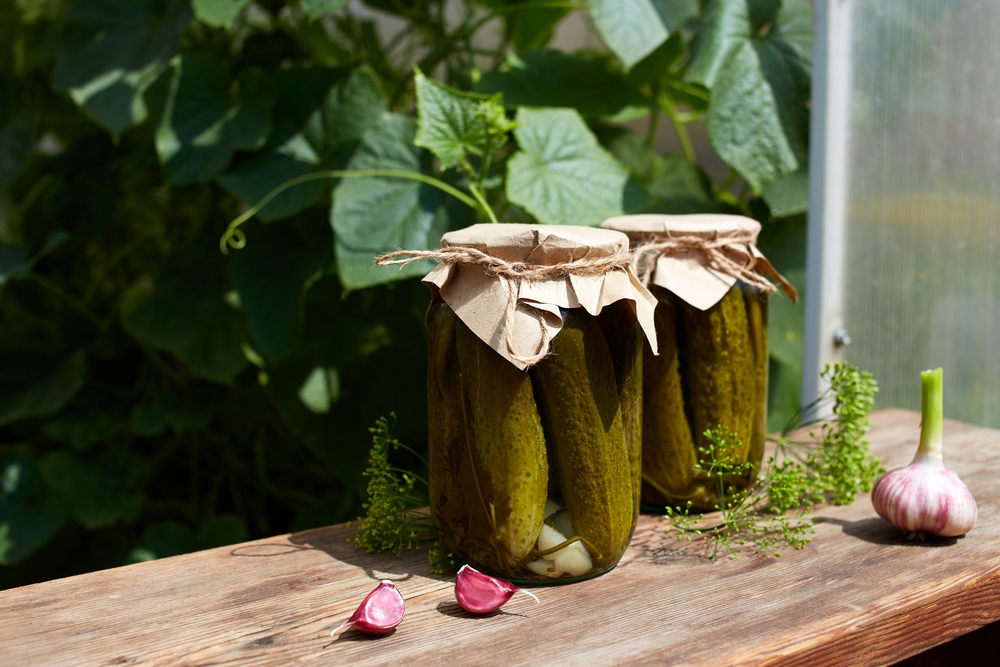Country-style canning and preserving is a timeless method to keep the taste of fresh, seasonal produce available year-round. Imagine opening a jar of summer tomatoes or strawberry jam in the middle of winter. The Ultimate Guide to Country-Style Canning and Preserving offers foolproof techniques to ensure your canned foods are both safe and delicious. From water bath canning to pressure canning, this comprehensive guide makes the process straightforward and accessible.
Readers will find step-by-step instructions and tips on everything from selecting the best produce to the proper use of jars and lids. With this guide, you can confidently preserve everything from garden vegetables to homemade jellies and jams. The convenience and satisfaction of enjoying home-canned foods make the effort worthwhile.
Explore resources like Countryside’s Canning and Food Preservation guide and the USDA’s Complete Guide to Home Canning to further enrich your canning knowledge. Whether you’re a beginner or looking to refine your skills, this guide ensures you have all the tools needed for successful canning and preserving.

Getting Started
Canning and preserving food allows you to enjoy seasonal produce year-round and reduce food waste. To successfully start, it’s important to understand the process, gather the right tools, choose quality ingredients, and adhere to safety guidelines.
Understanding Canning and Preserving
Canning involves using heat to kill microorganisms and sealing food in jars to prevent spoilage. There are two main types of canning: water bath canning and pressure canning.
Water Bath Canning: Ideal for high-acid foods like fruits, jams, and tomatoes.
Pressure Canning: Necessary for low-acid foods such as meats and vegetables. Each method requires specific tools and processing times to ensure safe preservation.
Essential Equipment and Tools
Having the right tools is crucial. Here’s what you will need:
- Canning Jars: Mason jars are the most popular.
- Lids and Bands: Ensure they are new to guarantee a proper seal.
- Canning Pot: A large pot for water bath canning or a pressure canner for low-acid foods.
- Jar Lifter: For safely moving hot jars.
- Funnels and Bubble Remover Tools: To fill jars without spilling and remove air bubbles.
Optional but Helpful:
- Labels: To note the contents and date of canning.
- Canning Rack: Keeps jars from touching the bottom of the pot.
Selecting the Best Ingredients
The quality of your preserved food starts with the ingredients:
- Fresh Produce: Choose fruits and vegetables at their peak ripeness. Avoid anything that’s bruised or overripe.
- Local and Organic: Whenever possible, use locally sourced and organic produce. This ensures better taste and fewer chemicals.
- Variety: Select varieties known for canning if available. Some produce holds up better through the canning process than others.
Remember, the fresher the produce, the better the final canned product.
Food Safety and Best Practices
Safety is paramount in canning to prevent foodborne illnesses:
- Always follow recommended recipes and processing times from trusted sources.
- Sterilize jars and equipment thoroughly before use to eliminate bacteria.
- Ensure jars are properly sealed by checking for an indent in the lid after cooling.
- Store canned goods in a cool, dark place. Maintaining the jars in a proper environment extends their shelf-life and keeps them safe for consumption.
By following these best practices, you reduce risks and enjoy safely preserved foods.
Canning and Preserving Techniques
In learning how to preserve food effectively, it’s essential to understand various methods such as water bath canning, pressure canning, pickling, fermenting, making jams and jellies, and even drying and freezing.
Water Bath Canning
Water bath canning is a technique primarily used for high-acid foods, like fruits, tomatoes, and pickles. This method involves submerging jars of food into boiling water for a specific period. The high temperature destroys harmful bacteria and seals the jars, ensuring a shelf-stable product.
Users must ensure the jars are heat-resistant and that lids are properly sanitized. The boiling process helps eliminate enzymes and organisms that cause spoilage. Water bath canning is ideal for beginners due to its relatively simple process and minimal equipment required.
Pressure Canning
Pressure canning is suitable for low-acid foods, such as meats, vegetables, and soups. This method uses a specialized pressure canner to achieve higher temperatures than boiling water can provide, which is crucial for safely processing low-acid foods.
Pressure canning involves sealing jars in a canner filled with water and cooking them under high pressure. The intense heat and pressure destroy bacteria, including botulism spores, ensuring the food is safe for long-term storage. It requires precision and proper equipment, but it preserves more nutrients compared to other methods.
Pickling and Fermenting
Pickling involves preserving foods in an acidic solution, usually vinegar, salt, or a brine. This method is great for vegetables like cucumbers, peppers, and carrots. The acid from the vinegar prevents bacterial growth, extending the shelf life of the preserved items.
Fermenting, on the other hand, relies on natural bacteria to convert sugars in the food into lactic acid, which acts as a preservative. Foods like sauerkraut, kimchi, and fermented pickles benefit from this method. Both techniques add unique flavors and textures to the preserved items, making them a favorite for many.
Jam and Jelly Making
Making jams and jellies is a popular method of preserving fruits. It involves cooking fruit with sugar and pectin, resulting in thick spreads that are both sweet and tart. The high sugar content and acidity prevent spoilage and extend shelf life.
The process starts by selecting ripe, high-quality fruits. Cooking them with sugar and pectin creates a gel-like consistency. Sterilizing jars and using proper canning techniques ensures a shelf-stable product. This method is perfect for capturing the flavors of seasonal fruits.
Drying and Freezing Methods
Drying foods involves removing moisture to inhibit the growth of bacteria, yeast, and molds. This method is suitable for fruits, vegetables, meats, and herbs. Techniques include air drying, oven drying, and using a food dehydrator. Properly dried foods can last for months and retain much of their nutritional value.
Freezing is another effective method of preservation. Almost any food can be frozen, from fruits and vegetables to meat and prepared meals. Freezing slows down enzyme activity and microbial growth. It’s essential to use airtight containers or freezer bags to prevent freezer burn and maintain food quality.
